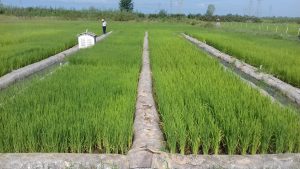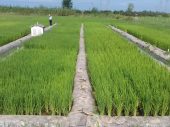The Webinar Workshop on Rice Yield Physiology
Rice (Oryza Sativa L.) is one of the strategic and staples food of more than 50% of the world population around the world, and especially in the rice-growing area. Rice also provides 15 percent of the protein and 21 percent of the energy needed by the world’s population. According to F.A.O. statistics, a steady increase in rice production per unit of rice fields is needed to sustainably feed the world’s growing population. (760 million tones paddy at 2025)(F.A.O., 2018). Despite the agronomic and genetic advances (high yielding varieties …) over the past five decades which increased the rice grain yield by more than 300%, still, a wide gap of rice grain yield exists between research and farmers’ paddy fields. Most of this yield gap is due to the untimely use of resources required by rice plants (such as water, fertilizer, insecticides, herbicides, etc.), which is mainly due to insufficient knowledge of rice farmers about the different growth stages of the rice plant and it’s yield physiology. In fact, crop yield physiology is a branch of plant physiology that studies the mechanisms and functions associated with crop yield.
This Online Webinar Workshop on Rice yield physiology conducted on Feb. 06, 2021, in the Rice Research Institute of Iran (RRII), Rasht, Iran. It attended by scientists, researchers, and staff of RRII. The workshop speaker is Dr. Farzin Pouramir, assistant professor (Crop Physiologist) of the Agronomy Department of RRII.
The covered contents were:
- Rice growth stages (vegetative stage, reproductive stage, and grain ripening stage)
- The most important internal (such as the size and frequency of leaf stomata, the amount of leaf nitrogen and chlorophyll, leaf specific weight, etc.) characters affecting the photosynthesis and the growth of rice plants.
- The most important external (such as radiation, temperature, air carbon dioxide concentration, wind, etc.) factors affecting the photosynthesis and the growth of rice plants
- The characteristics of the ideal type of rice for the production of high yields in the coming years were introduced.

To find more information about this workshop please contact: Dr. Pouramir (f.pouramir@arreo.ac.ir) or (agro_ferdowsi@yahoo.com)

